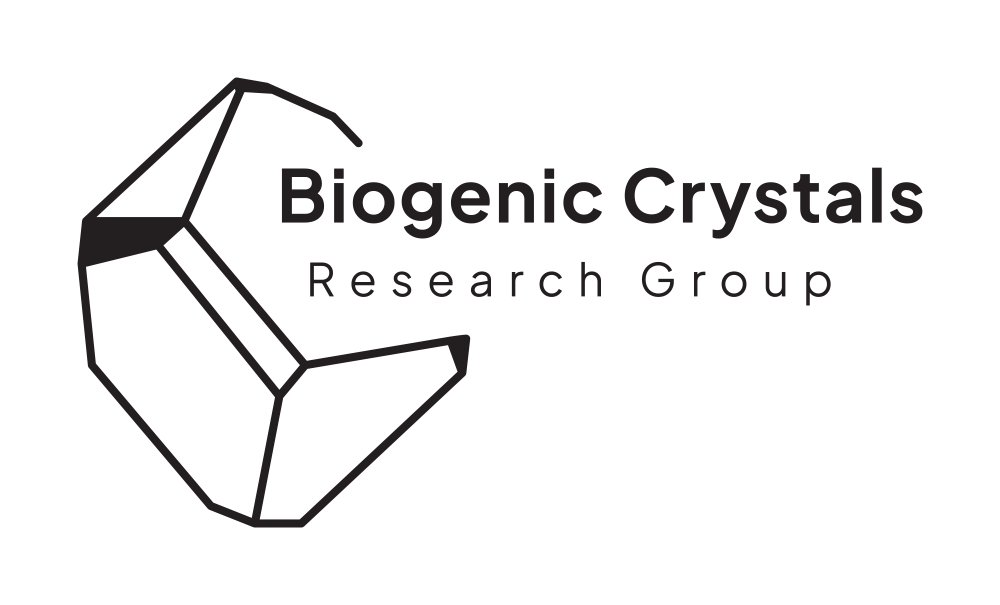Biogenic Crystals Research Group

The main subject of Biogenic Crystals Research Group is related with experimental and theoretical investigations of the growth of crystals of various substances including biogenic crystals. Crystals grown from solutions take faced morphologies that may change during growth. The size and shape of crystals is one of the factors that influence material properties and quality. Therefore, the question why and how crystals form a wide variety of habits is of vital importance. The question is important not only for modern technology but also to understand the formation of minerals and crystals in living organisms. Taking above into account our current research efforts are mainly focused on the growth morphology of crystals from kinetic and geometric perspective. In kinetic and geometric formulation the crystal is considered as a set of crystallographic planes intersecting in 3D space. In this approach it is possible to take into account both crystal geometry and growth conditions what consequently allows one to analyse and predict the evolution of crystal morphology and habit, for instance appearance and disappearance of crystal faces. The kinetic-geometric formulation is also very helpful in the derivation of kinetic conditions corresponding to the growth of different shapes of crystals of the same substance. Within interests of our Group is correlation of the kinetic-geometric point of view with standard crystal growth models as Burton-Cabrera-Frank (BCF) model. Then one takes into account the growth processes at molecular level, for example the incorporation of growth units onto crystal surface and the motion of parallel steps on the surface. The theoretical studies are devoted to computer modelling of crystalline surfaces at molecular level using the ab initio quantum mechanical calculations. The calculations are related to equilibrium properties of surfaces and also kinetic processes. The theoretical investigations include also the calculations of volumetric properties of growing crystals.
We also work on the biogenic crystals concerning physiological and pathological biomineralisation of alive organisms. In particular, the investigations concern the nucleation and crystallization processes of components of infectious urinary stones, particularly the crystals of magnesium ammonium phosphate hexahydrate, which are usually associated with carbonate apatite precipitation. Nucleation and crystallization of these kinds of crystals is related to urinary tract infections by microorganisms from species of Proteus. The investigations concern the experimental studies of physical phenomena occurring during the nucleation and crystallization of these components and also the search of the agents able to inhibit their nucleation and growth. Experimental investigations are realized in vitro conditions. The crystallization process is induced by Proteus mirabilis to mimic the real urinary tract infection, which usually lead to urinary stone formation. In this field we carry out also the investigations of early phases of nucleation and growth of components of infectious urinary stones using optical methods including spectrophotometric. Optical methods are related also with the dependence between parameters of the light beam transmitted through the examined sample and parameters of obtained images after the passage of this light beam through the sample. Our investigations concern also the selection of the optimum-wavelength of the laser-radiation used in optical methods.
The part of works of the Biogenic Crystals Research Group concerns biomineralisation of plants, mainly the growth of crystals of the calcium oxalate in plant's cells.
Group Leader
Group Projects
Latest publications
-
J. Prywer, E. Mielniczek‐Brzóska, A. Torzewska, Phosphoric Acid Versus Biogenic Mineralization of Hydroxyapatite and Carbonate Apatite in Relation to Infection‐Induced Urinary Stones: Physical, Chemical and Microbiological Aspects, April 2025
-
J. Prywer, A. Torzewska, E. Mielniczek-Brzóska, Understanding the role of zinc ions on struvite nucleation and growth in the context of infection urinary stones, Metallomics 16(5), mfae017, 2024
-
R. Cabassi, D. Delmonte, J. Prywer, Experimental evidence of the pyroelectric nature of struvite, Crystengcomm, 2024
-
K. Pernal, Ł. Kołodziejczyk, R. J. J. Riobóo, J. Prywer, Experimental–computational approach to investigate elastic properties of struvite, J. Chem. Phys. 158(24), 244501, 2023
-
J. Prywer, A. Torzewska, M. Cichomski, P. P. Michałowski, Insights into the physical and chemical properties of struvite crystal surfaces in terms of the effectiveness of bacterial adhesion, Sci. Rep. 13(1), 5557, 2023
-
C. Singh, J. Prywer, D. Yadav, On the Three-Dimensional Morphology of In Situ Grown TiB2 Particles in Molten Aluminum, J. Mater. Eng. Perform., 2023
-
M. Skubisz, A. Torzewska, E. Mielniczek-Brzóska, J. Prywer, Consumption of soft drinks rich in phosphoric acid versus struvite crystallization from artificial urine, Sci. Rep. 12(1), 14332, 2022



